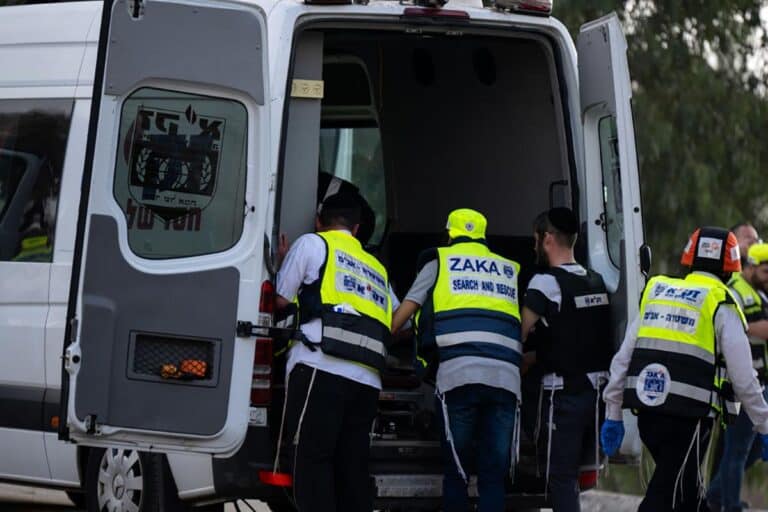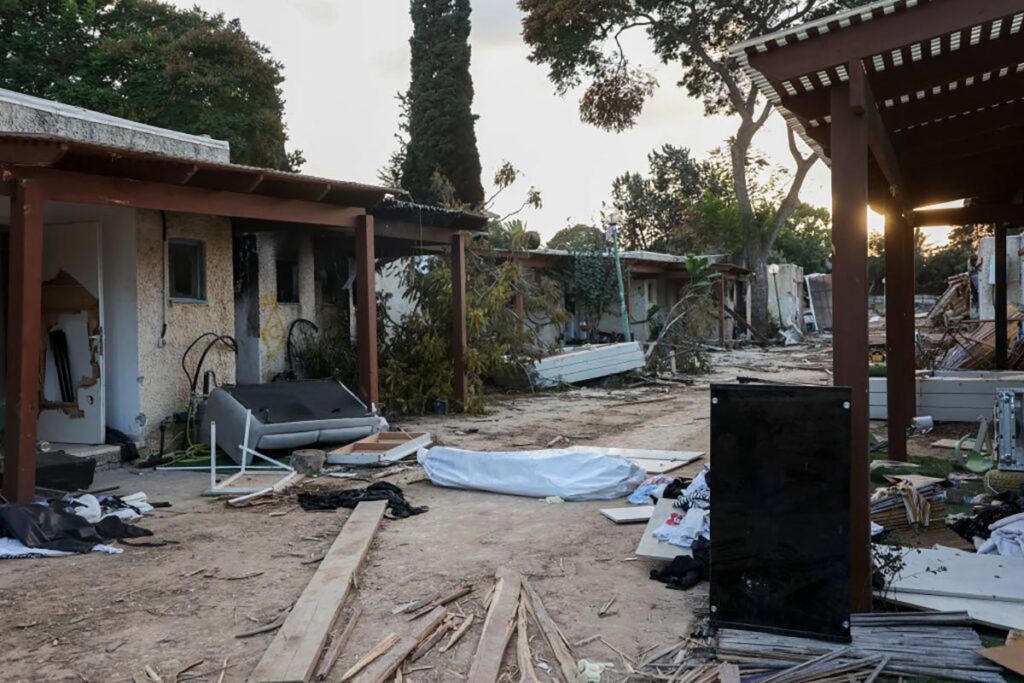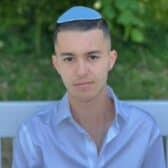
In the past few days, Israelis in the Gaza envelope have experienced the deadliest attack in the country’s history and the deadliest attack in Jewish history since the Holocaust.
As the IDF reclaims villages occupied briefly by Hamas fighters, rescue teams led by Zaka — the Israeli non-profit dedicated to responding to mass casualty incidents — have uncovered evidence of brutal attacks on civilians.
At least 108 bodies have been recovered from Kibbutz Be’eri, the largest village in the Eshkol Regional Council. Prior to the onslaught by Hamas, the kibbutz was home to roughly 1,200 Israelis, and was known around the country for its arts scene. Many residents are still unaccounted for, as bodies and hostages continue to be identified.
Among those taken hostage from Be’eri is Yaffa Adar, an 85-year-old Holocaust survivor who has lived in the kibbutz for most of her life. In a video filmed on Saturday, she is seen being driven back into the Gaza Strip on a golf cart accompanied by armed terrorists wearing Hamas headbands.
Hamas terrorists took wheelchair-bound Holocaust survivor Yaffa Adar, 85, hostage. She is one of over 100 Jews taken to Gaza at gunpoint. pic.twitter.com/cEgUcrDHlT
— The Israel Files (@theisraelfiles) October 9, 2023
Dani Fux, a survivor of the Be’eri massacre, recounted the events of the morning in an interview with Israeli media.
Fux said that the initial incursion by Hamas occurred shortly after 7 am on Saturday and consisted of some 90 armed men. The first Israeli troops to arrive at the scene, some 20 soldiers from Shaldag, came almost two hours later. However, “within a short time the force was eroded,” and the massacre continued with vigor, Fux said.
“From then on, we only heard Arabic. The terrorists went from door to door, abducted people or killed them. Sometimes they only killed. Sometimes they took the kids and killed the parents, sometimes the other way around,” he said.
Several of the survivors said that it was like a pogrom, “like going back to the Kishinev pogrom,” a violent anti-Jewish riot in which 49 people were killed and hundreds were injured in 1903, one resident said.
Survivors of the attack on Be’eri are currently being housed in a hotel where they are being cared for. While they may have escaped physically uninjured, the psychological impact of their experience cannot be understated.
The psychological terror of the massacre at Be’eri has spread beyond just the residents.
During the initial takeover of the kibbutz on October 7th, a Hamas journalist and camera crew recorded the massacre, with the reporter eagerly describing the events in a video that was subsequently posted and spread in pro-Palestinian social channels and throughout Israel.
One of the victims feared to have been killed or taken hostage is 74-year-old Vivian Silver. Originally from Winnipeg, Manitoba, Silver spent several years as a board member of B’tselem, an Israeli organization that claims Israel is an apartheid state.
Silver co-founded the Arab Jewish Center for Equality Empowerment and Cooperation, and has, in the past, volunteered to drive Palestinians from Gaza to Israel hospitals for medical treatment.
“These are kibbutzniks, the people who vote for the left,” said Rachel Gur, an Israeli contributing to the search and rescue efforts around Be’eri, “You’re talking about the old-time secular leftists, who want peace, who are against annexation.”
Kibbutz Be’eri was established in 1946, two years before the state of Israel’s establishment. It has endured every war Israel has ever encountered, coping with hundreds of rockets since the Hamas takeover of the Gaza strip in 2006.
Around the same time as the massacre at Kibbutz Be’eri, another mass atrocity was occurring close by at Kibbutz Kfar Aza.
The events at Kfar Aza underscore the utterly brutal tactics employed by Hamas during their initial onslaught. Upon retaking control of Kfar Aza and beginning the search for victims and survivors, IDF soldiers found the remains of roughly 40 babies, some of whom had been beheaded, killed mercilessly by the terrorists.

“It’s not a war, it’s not a battlefield. You see the babies, the mother, the father, in their bedrooms, in their protection rooms, and how the terrorists killed them,” IDF Major General Itai Veruv told i24News. “It’s a massacre.”
The IDF allowed media crews to visit Kfar Aza on Tuesday and see for themselves the barbaric actions committed by Hamas. Reserve soldiers deployed to Kfar Aza could be seen supporting and consoling each other after seeing the aftermath.
“They arrived expecting the world, but the scenes are beyond anything that one could imagine. Some soldiers say they found babies with their heads cut off, entire families gunned down in their beds,” i24News reported.
Some 200 bodies have since been recovered from Kfar Aza and the death toll is expected to rise as identification efforts continue.
